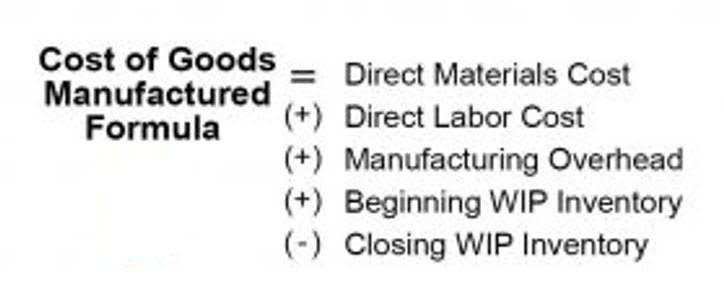
When there is a cash shortage, it is treated as an expense; thus we recorded on debit. In contrast, when there is an overage, it is treated as income; thus we recorded on credit. Let’s assume Tom rang up a $100 pair of running shoes for $100, but he miscounted the cash received for the shoes. The accounting system will show $100 in sales but $101 of collections. The journal entry to record this sale would debit cash for $101, credit sales for $100, and credit cash over short for one-dollar.
Cash shortage in replenishment of petty cash

A cash shortage normally occurs in a retail Accounts Receivable Outsourcing environment when the sales are reconciled to the cash receipts in the register at the end of the trading day. If the cash in the register is less than the sales there is said to be a cash shortage. Likewise, if the cash is greater than the sales the cash is said to be over.
Stop Wasting Time on Financial Research
- Understanding cash over short is crucial for investors and financial analysts when evaluating the performance and accuracy of an organization’s financial reporting.
- It is essential for companies to minimize cash over short incidents by implementing robust internal controls and addressing the root causes of these discrepancies.
- The total amount of purchases from the receipts ($45), plus the remaining cash in the box should total $75.
- Therefore, the balance of cash short and over is on debit or credit depends on whether it is shortage or overage.
- The employees who handle cash are trained on how to count and record cash accurately, and the cash handling area is secured with CCTV cameras and access control.
- If we have an overage of cash, we record the overage as a credit, and this has the same impact as if we are recording revenue.
Petty cash, another term, signifies a small amount of money kept on hand https://www.bookstime.com/ by an organization for making minor expenses like postage, office supplies, or reimbursing employees for work-related costs. Cash over short, however, is an account used to track discrepancies between reported and audited figures related to cash transactions. This can occur when there is a glitch in the point-of-sale system, or when there is a discrepancy between the cash register and the accounting system. For instance, if the system fails to record a transaction or records it twice, it can cause an overage or shortage respectively.

Understanding Over and Short

It highlights the need for business solvency and strong accounting practices. Knowing how cash shows up and affects these statements is key for finance experts. The cash overage journal entry is one of many bookkeeping entries used in accounting, discover another at the links below.
- For example, on December 22, after reconciling the cash on hand with the cash sales, we find that there is a cash shortage of $5.
- Capital assets can include cash, cash equivalents, and marketable securities as well as manufacturing equipment, production facilities, and storage facilities.
- The balance sheet provides a snapshot of a company’s financial position at a specific point in time, and cash is prominently displayed as a current asset.
- The premier platform for European financial data, serving investors and companies with 4.1 million+ filings from 13,675+ companies across 44 markets.
The accounting for the cash over and short account is straightforward. However, to make it easy, we will only look at the petty cash transaction as the journal entry is usually the same. For example, the cash shortage needs the adjustment on the debit side while the cash overage needs the adjustment on the credit side. It is an accounting tool that helps businesses keep track of the difference between the actual cash and the expected cash. Accurate reporting of cash and cash equivalents impacts various financial ratios, such as the current ratio and quick ratio, which are used to assess a company’s liquidity.
- It signifies the difference between reported sales figures and audited financial statements, helping businesses detect discrepancies, improve internal controls, and maintain accurate financial records.
- Proper management of cash is crucial as it ensures the business can meet its immediate financial commitments, such as paying suppliers, employees, and other short-term liabilities.
- It is essential to acknowledge that this term primarily applies to businesses dealing extensively with cash transactions, such as retail outlets and banking institutions.
- Just like brushing your teeth, you should also be balancing your cash register drawer daily.
- They should be readily convertible to known amounts of cash and subject to an insignificant risk of changes in value.
- One of the most common errors in the accounting process is over and short.
What Does Cash Over Short Mean?
The over or short amount can be caused by several reasons like bank fees, deposits in transit, outstanding checks, or errors in recording transactions. While it may seem like a small issue, over and short can have a significant impact on a business’s financial statements. Therefore, it is crucial to understand how over and short works and how it should be handled. In this section, we will explore the concept of over and short from different points of view and provide in-depth information on the topic. This practice helps stakeholders make informed decisions about the company’s liquidity and operational efficiency. Overall, understanding the role of cash and cash equivalents in financial statements is essential for evaluating a company’s financial stability.

GAAP also requires companies to disclose any restrictions on cash and cash equivalents. This includes any contractual or legal constraints that limit the use of these is cash over and short an asset funds. Transparency in such disclosures helps investors and creditors understand the true liquidity position of the company. A dangling debit is a debit entry with no offsetting credit entry that occurs when a company purchases goodwill or services to create a debit.